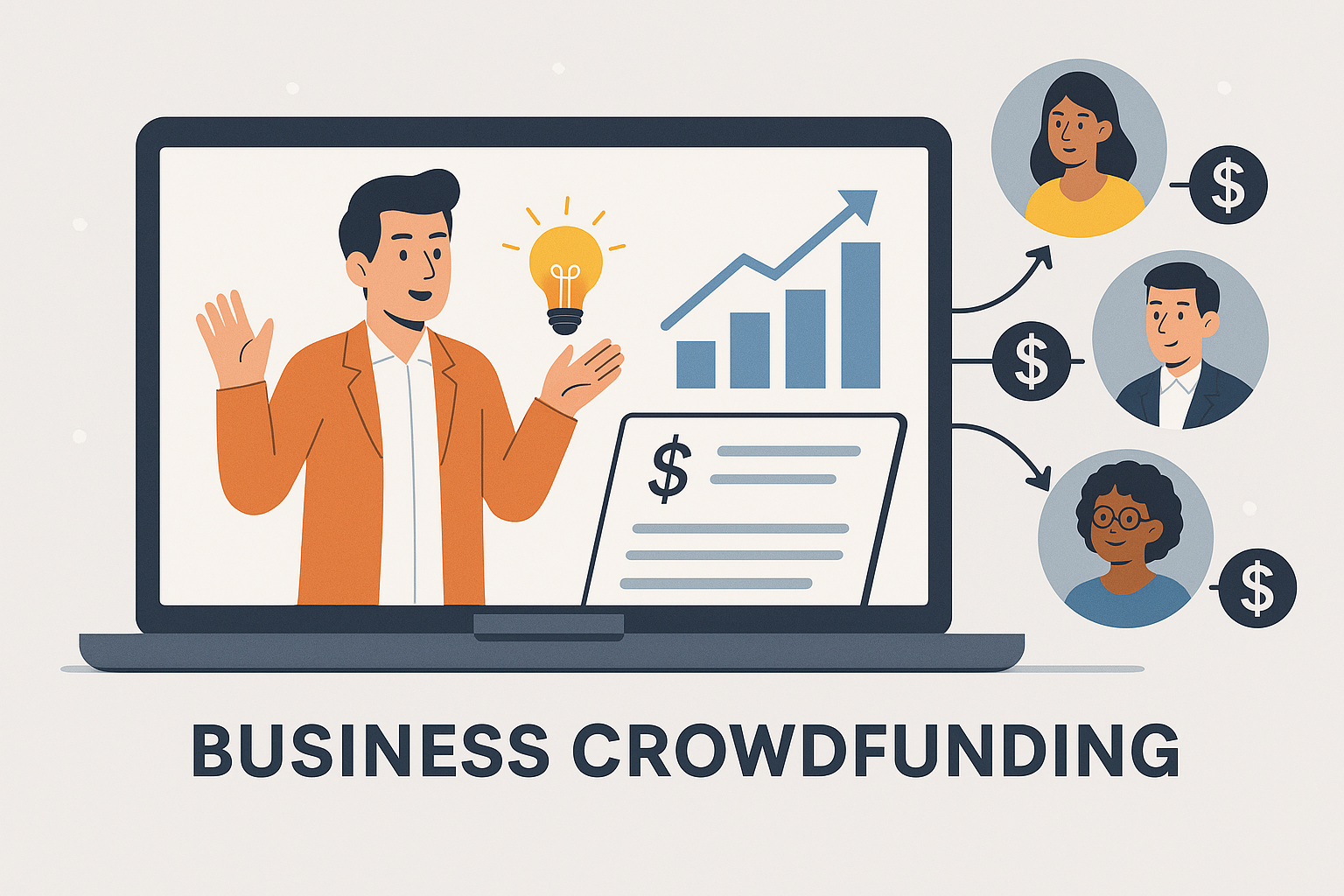1 (800) 584-0324
Many entrepreneurs look beyond traditional loans and investors when raising money. One option that has exploded in recent years is business crowdfunding. From product launches on Kickstarter to equity raises on online investment platforms, crowdfunding can provide both capital and validation.
But is business crowdfunding the right path for your company? In this guide, we’ll explain how it works, the main types, success strategies, and which businesses benefit most.
What Is Business Crowdfunding?
Business crowdfunding is the process of raising funds online from a large number of people, typically via dedicated platforms. Instead of a single bank loan or venture capitalist, you tap into “the crowd” for financing.
Two main types dominate the market:
- Reward-Based Crowdfunding
- Contributors fund your campaign in exchange for early access, discounts, or perks.
- Popular platforms: Kickstarter, Indiegogo.
- Best for: Product launches, creative projects, consumer-focused startups.
- Contributors fund your campaign in exchange for early access, discounts, or perks.
- Equity Crowdfunding
- Investors receive a stake in your company in exchange for capital.
- Popular platforms: StartEngine, SeedInvest, FrontFundr (Canada).
- Best for: Growth-stage companies needing larger raises.
- Investors receive a stake in your company in exchange for capital.
Pros of Business Crowdfunding
✅ Access to capital without banks
✅ Market validation before full-scale launch
✅ Marketing boost—campaigns double as advertising
✅ Community engagement—loyal supporters become customers
✅ Equity crowdfunding = no repayment obligations (though you give up ownership)
Cons of Business Crowdfunding
❌ High competition—many campaigns fail to reach funding goals
❌ Marketing costs & effort—success depends on strong promotion
❌ Equity dilution—you may give up partial ownership
❌ Public exposure—your idea and financials may be visible to competitors
❌ Platform fees—typically 5–10% of funds raised
Success Tips for Crowdfunding a Business
- Tell a compelling story: Why your product or company matters
- Invest in visuals: High-quality video and images build trust
- Set realistic funding goals: Better to over-deliver than fall short
- Leverage your network: Early backers create momentum
- Offer attractive perks: Exclusive products or experiences encourage pledges
- Communicate consistently: Update backers to keep engagement high
Business Crowdfunding vs Traditional Financing
| Factor | Crowdfunding | Loan / Investor |
| Remboursement | None (reward) or equity dilution | Fixed payments (loan) or equity loss |
| Eligibility | Broad—based on campaign appeal | Strict credit checks, collateral, or VC criteria |
| Marketing Impact | High—doubles as exposure | Minimal marketing benefit |
| Control | Retained (reward) or partially diluted (equity) | Often diluted through covenants or ownership |
| Best For | Product launches, startups, creatives | Established businesses, large raises |
U.S. vs. Canada Crowdfunding
- U.S.: Equity crowdfunding legalized via the JOBS Act. Platforms like StartEngine and SeedInvest let small businesses raise from retail investors.
- Canada: Crowdfunding regulations vary by province; platforms like FrontFundr and Equivesto enable equity crowdfunding under securities exemptions.
Reward-based crowdfunding (Kickstarter, Indiegogo) is popular in both countries, especially for consumer-facing products.
When Business Crowdfunding Makes Sense
- Launching a new consumer product needing validation
- Building a community-driven brand
- Seeking non-debt funding to preserve cash flow
Exploring equity alternatives when VC or bank loans aren’t accessible.
Exploring equity vs debt crowdfunding as a financing path? Agile Solutions helps businesses evaluate crowdfunding alongside loans, private debt, and alternative financing options across the U.S. and Canada.
👉 Book a consultation today at agilesolutions.global or email us at info@ddeagle
#EquityCrowdfunding #DebtCrowdfunding #BusinessFinancing #AlternativeLending #StartupFunding #PrivateDebt #CapitalMarkets



